[ad_1]
Chrysanthemums have benefits that attain previous the extreme ornament we have the benefit of in autumn. Their showy blooms entice helpful bugs like ladybugs, hoverflies, and lacewings, which prey on frequent pests like aphids and spider mites. Their intrinsic essential oils and aromatic toxins make their surrounding house a lot much less engaging to invading bugs.
Nevertheless, merely as they entice beneficials, they don’t deter all pests and may fall prey to frequent bugs. They even have genus-specific insect species.
Vegetation pressured by environmental elements often are inclined to succumb to pests and diseases. Watering fluctuations and air circulation factors are main stressors for mums. The perfect pest administration methodology is to supply them with their most popular rising circumstances on the get-go.
Scouting and detecting pests early helps cease them from depleting nutritional vitamins, impacting improvement and flowering, and transmitting diseases. A numerous planting affiliation creates a additional balanced yard system. Depend upon companions to attract these predatory bugs to help deal with the pesky invaders.
Aphids
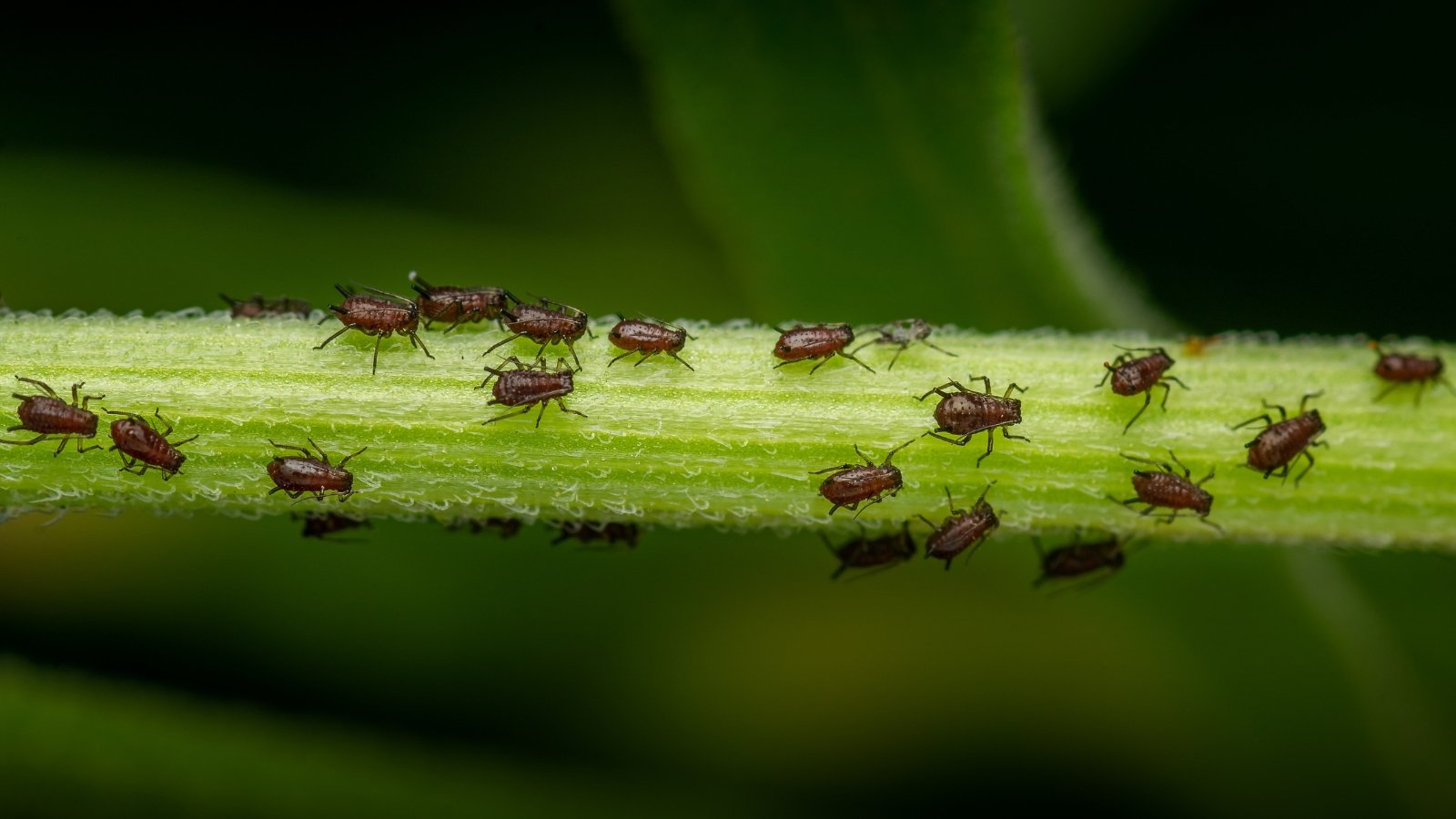

Aphids are prolific reproducers. The sap-sucking bugs feed on tissues with an indiscriminate palette that options many crops. Chrysanthemum aphids (Macrosiphoniella sanborni) are brownish-black and impact the genus, nonetheless are just one amongst many types. Aphids are pear-shaped and soft-bodied in gentle yellow, inexperienced, pink, brown, or black. They colonize in large numbers on the undersides of leaves.
Aphids need clean, new improvement, along with tender shoots, leaf undersides, buds, and blooms. They don’t sometimes pose a excessive menace nonetheless can stress crops. As well as they go away behind sugary honeydew, leading to unattractive black, sooty mildew. Aphids unfold fungal spores and are vectors for viruses, along with mosaic virus and stunt, for which there’s no treatment.
Mums with excessive infestation may current curled leaves, yellowing, and stunted improvement. Indicators of virus or fungal diseases like leaf spot, mottling, and distortion may appear.
Treatment
Spraying a strong stream of water early throughout the day may deter aphids by displacing them from leaves and stems. The stream detaches the mouth elements of piercing bugs from their our our bodies. Try this as part of ongoing repairs with recurring aphids, caring for chrysanthemums’ brittle branches.
Pure predators are top-of-the-line line of safety. Enchantment to ladybugs, parasitic wasps, hoverflies, and lacewings with quite a few blooming decisions.
Since aphids congregate in numbers, pruning off impacted sections may eradicate small infestations. Horticultural cleansing cleaning soap or an oil harking back to neem controls infestations. Plant-based insecticidal oils embody garlic extract, clove, rosemary, mint, and cinnamon oils and are environment friendly pure controls. Adjust to label directions, as these therapies impact all bugs, along with pollinators. Time of day is essential in software program.
Diatomaceous earth dusted over crops and soil may cease the unfold. The powder creates a sharp ground that damages soft-bodied bugs.
To cease aphids, water always to achieve evenly moist soils. Do not overfertilize. Aphids gravitate in direction of drought-stressed specimens over healthful, well-watered ones.
Nematodes
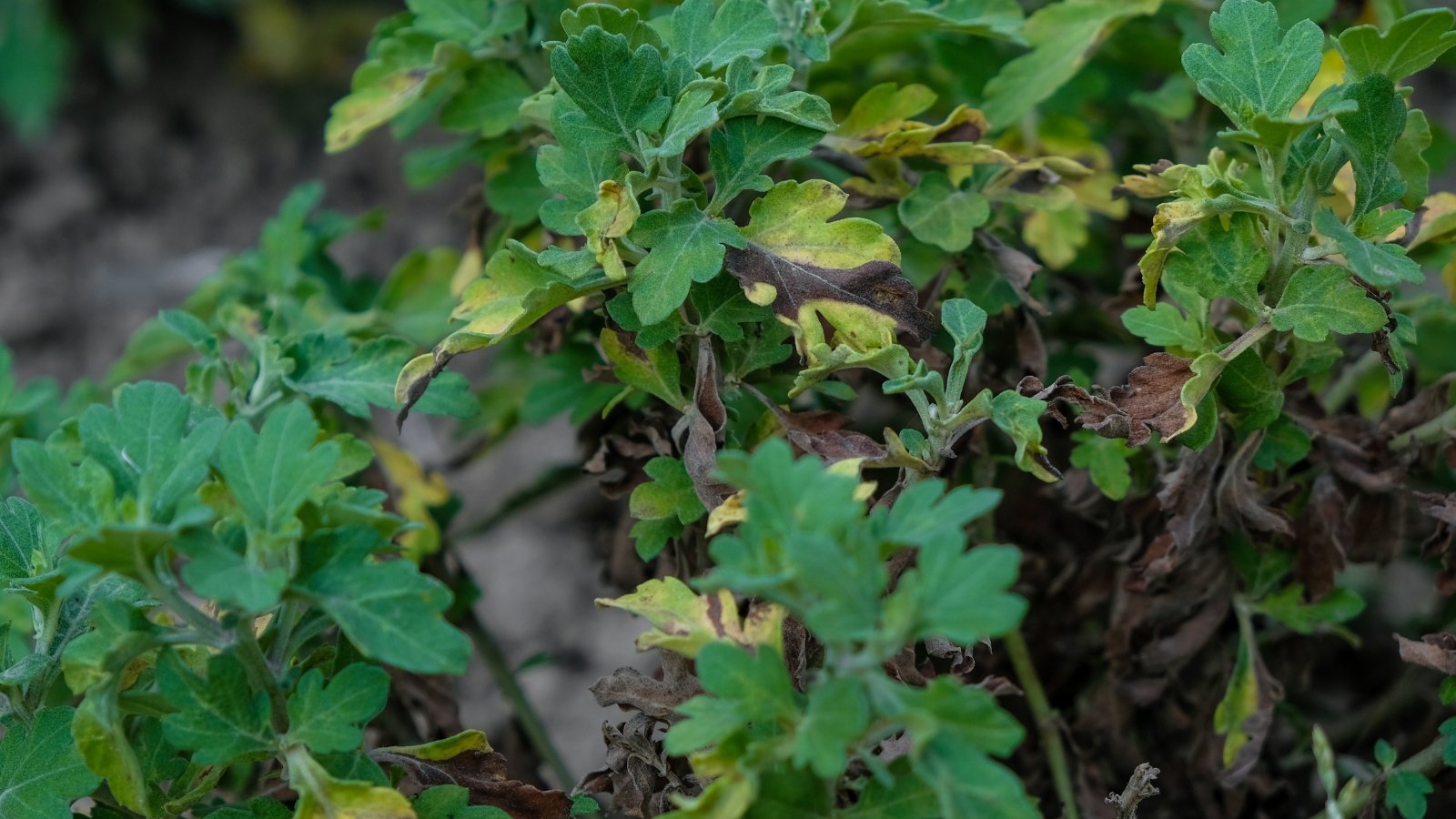

Foliar nematodes are troublesome to see as tiny, slender roundworms. Yellow-brown spots on leaves are the preliminary indicator. These spots start on the underside leaves and work their means up. They’ll finally cowl your whole leaf, which turns into dry and drops.
After spring rain or watering, they climb (or swim) up stems throughout the water channel to enter leaves for feeding. Foliar nematode hurt may kill the perennial. Preliminary spots sometimes mimic the fungal sickness leaf spot, which has darker black spots.
Nematodes overwinter throughout the soil and fallen particles from affected specimens. Amazingly, they will lie dormant for over a 12 months in fallen leaves.
Treatment
Mulching is a superb measure to cease water from splashing onto the stems and foliage to cease nematode entry. Steer clear of overhead watering and drenching leaves and stems unnecessarily. Water is on the soil stage, whether or not or not by hand, drip irrigation, or soaker hoses.
Take away and discard contaminated supplies and surrounding ground soil, conserving them away from the mattress and compost pile.
Insecticidal cleansing cleaning soap may help as a treatment. Moreover, spray surrounding crops in excessive situations (significantly if the distinctive plant warrants eradicating). It may help catch nematodes sooner than they enter the tissues of in another case healthful decisions.
Spider Mites
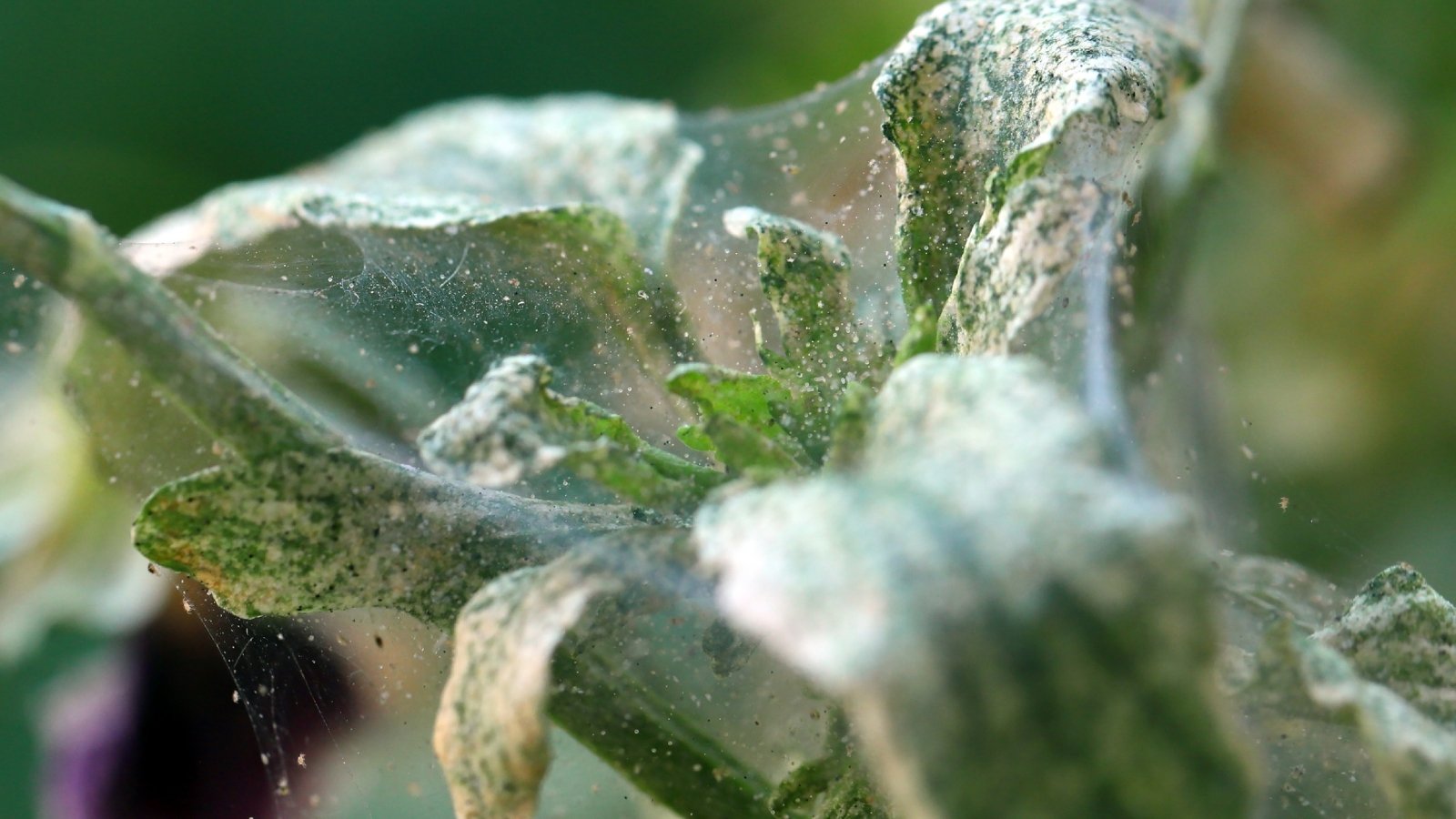

Like aphids, spider mites are sap-suckers that dwell on the undersides of leaves. Two-spotted mites and others favor chrysanthemums, and with their piercing mouthparts, they feed on cellular tissue. It is doable you may not see the tiny creatures with out a magnifying glass, nonetheless their good webbing on buds, stems, and leaves provides them away.
Colonies dwell near leaf veins and mid-ribs beneath leaves. The females lay eggs, and the larvae quickly feed on sap and tissues. Adults feed and produce the tight webs.
Foliage reveals pale spots, gentle yellowing, and stippling on surfaces and may flip bronze. Leaves turn into stiff and curl, leading to early drop. Blooms wither and discolor.
Spider mites occur in scorching, dry, and dusty circumstances. They flock to mums experiencing drought stress.
Treatment
Helpful bugs, along with predatory mites, help administration populations. In case you detect spider mites, make use of the stream of water from a hose methodology, as with aphids. Prune away affected elements and eliminate particles. A horticultural cleansing cleaning soap or oil helps mitigate excessive situations.
To cease spider mites, protect evenly moist soils. Water fluctuations give spider mites the prospect to increase, further weakening their hosts.
Thrips
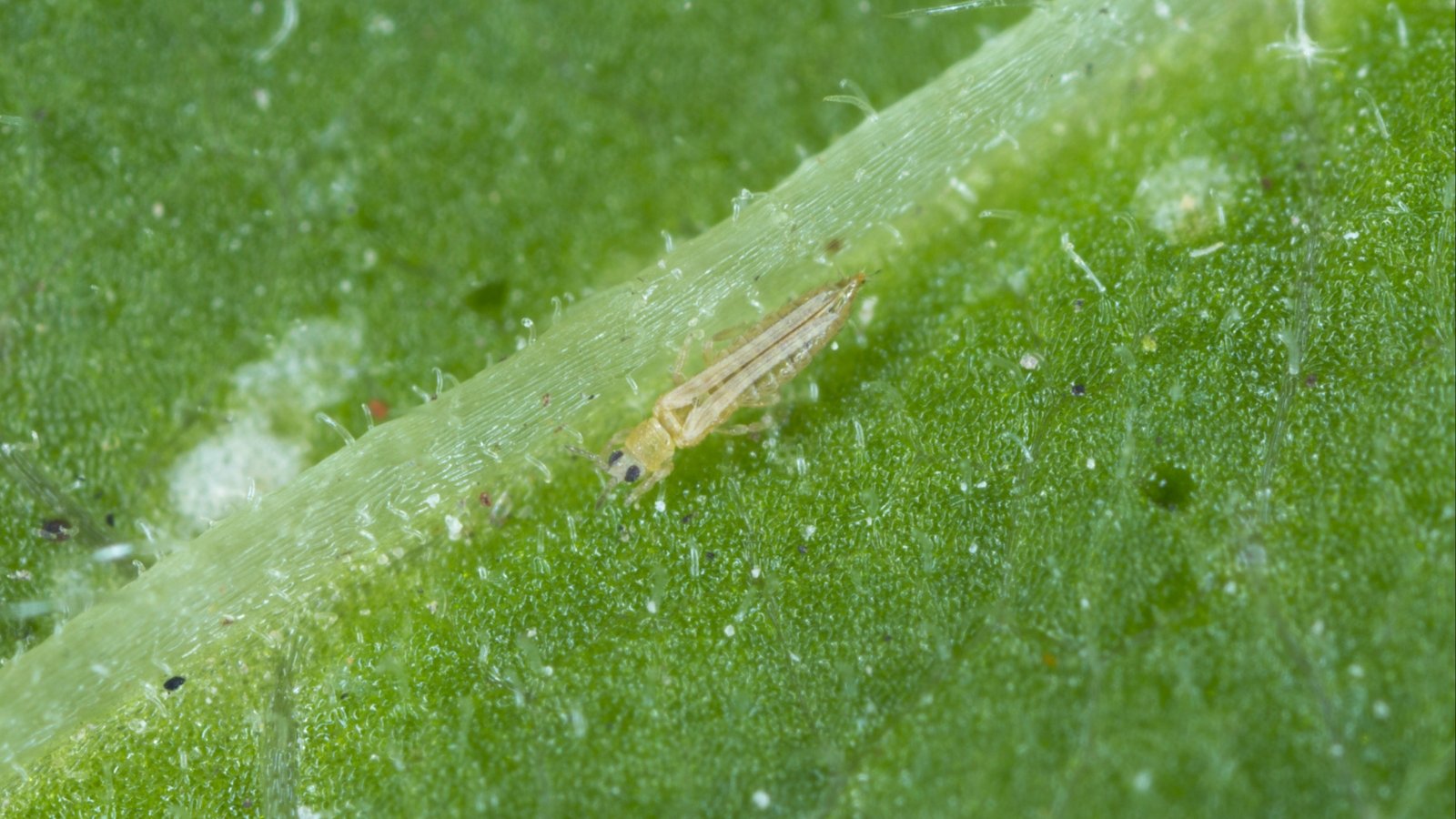

Thrips are tiny with prolonged, slim our our bodies, and adults have fringed wings. Their shade ranges from translucent white to yellow, brown, and black.
Thrips feed on flower and foliar tissues and carry viruses. When thrips infest petal tissues, blooms develop white spots or distort. Leaves may look silvery and stippled or brown and papery.
Not all thrips damage mums. Some feed on aphids and mites as pure pest administration. In case you see thrips nonetheless no indicators of harm, preserve off on treatment. However when hurt accompanies the insect, it’s easy to handle them early on and with frequent scouting. In case you observed thrips, gently shake stems over a bit of paper and seek for dislodged pests.
Treatment
As with spider mites, predatory bugs like parasitic wasps, completely different mites, and inexperienced lacewings naturally administration thrips. Rinse the mud off crops to promote beneficials and deter tissue-feeding bugs. Clip and eliminate affected sections.
Neem and horticultural soaps take care of outbreaks. Spinosad, derived from a micro organism, is an orgainc treatment that disrupts their feeding and kills the insect.
Caterpillars
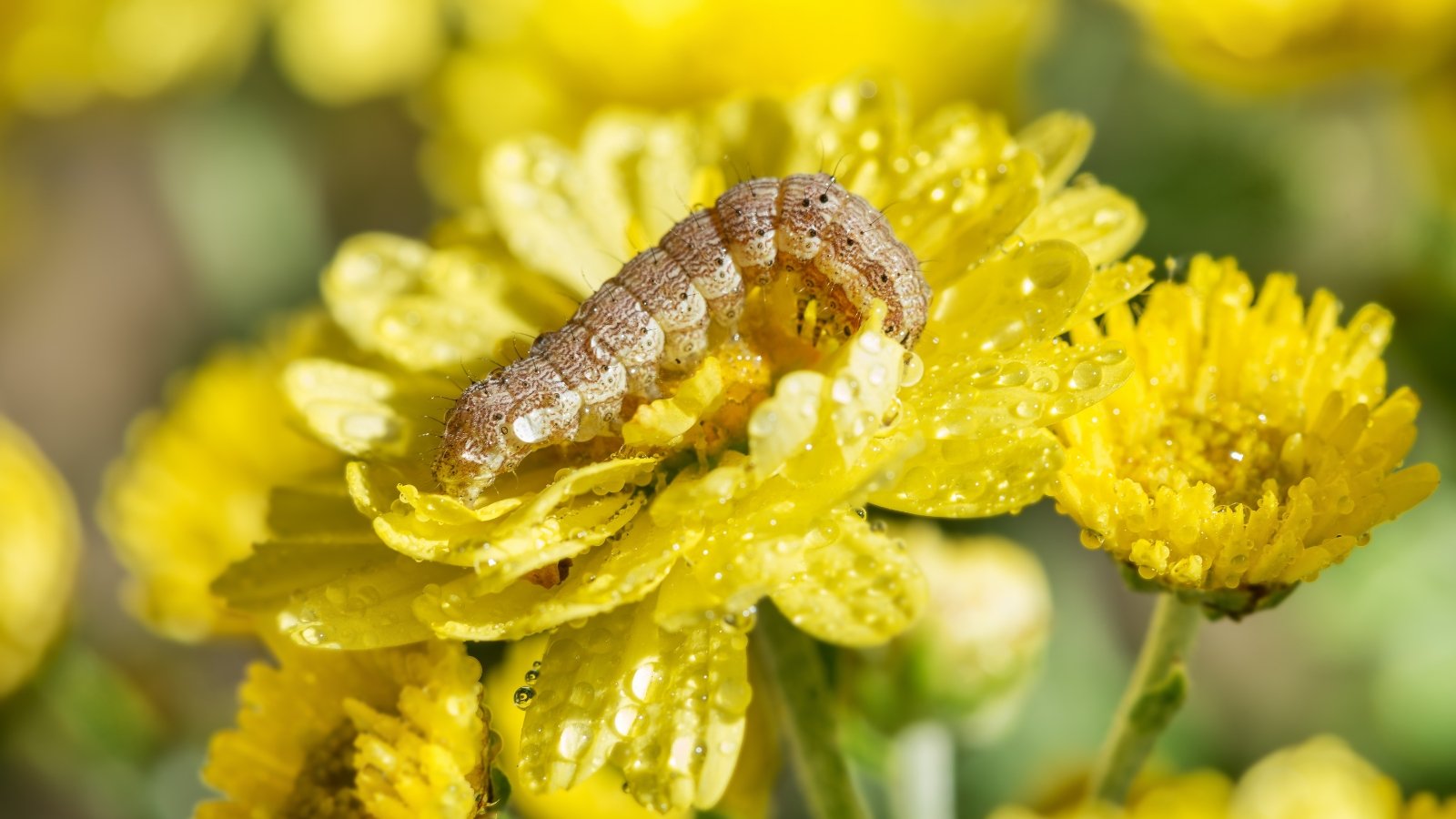

Caterpillars like budworms, leaf rollers, and cutworms are sometimes friends. Budworms are caterpillars that feed on stems, leaves, and buds. Their voracious appetites set off quick hurt.
The tobacco budworm feeds on buds and petals. It is most energetic at night, and chances are high you may uncover chewed petals and budworm droppings by day.
The grownup is a gray moth that lays eggs on the leaf’s undersides. The caterpillars hatch inexperienced or gentle rust-colored. Small holes in leaves and petals level out early infestation.
The inhabitants will enhance over the seasons as additional budworms hatch, feed, and pupate throughout the surrounding soil to turn into grownup moths. Together with mums, they affect petunia, geranium, calibrachoa, ageratum, and marigolds, amongst completely different bloomers.
Treatment
Fortunately, caterpillars are easy to determine. Hand-pick them off crops throughout the morning or night time when most energetic. Throughout the day’s heat, they leisure on the soil stage near the underside of the stems. Bacillus thuringiensis (BT) is a micro organism that disrupts digestion and causes caterpillars to stop feeding. It is a natural administration.
Leaf Miners
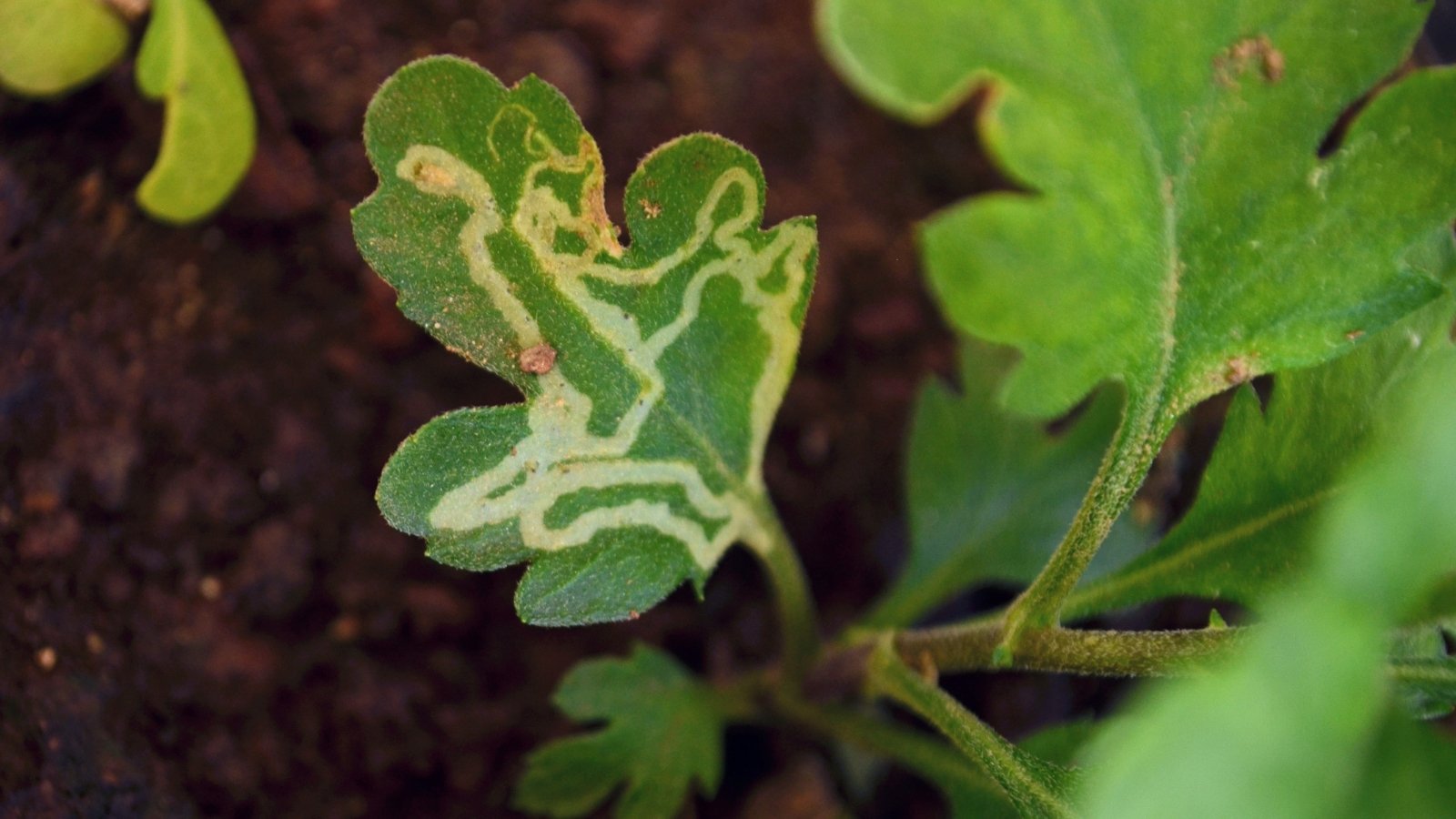

Leaf miners are fly larvae that burrow and tunnel into foliage. Chrysanthemum leafminers (Chromatomyia syngenesiae) are considered one of many offenders. Larvae are yellow, cylindrical, and seedlike. Grownup leaf miners are small black flies, sometimes with a yellow triangle on the bottom of their wings.
Leaf miners go away seen pathways and punctures that deform foliage and petals. Plant elements turn into yellow and blotchy. The larvae feed beneath the leaf ground, leaving winding trails.
Grownup leaf miners pierce leaves and petals to entry sap and lay eggs. The punctures flip white for a speckled look on surfaces.
Fortunately, leaf miners not typically do excessive hurt. In heavy infestations, they’ll sluggish plant improvement and set off leaf drop, and their mining may create openings for fungal an an infection.
Treatment
Lacewings and predatory wasps prey on leafminers. Take away damaged leaves which have trails by them to easily administration a lightweight infestation.
Crush trails with a pinch to squelch the within miner. Neem oil, BT, and spinosad foliar sprays administration infestations.
To cease leaf miners, irrigate for fixed moisture. Steer clear of overwatering and prolonged intervals of saturation. Irrigation monitoring isn’t quite a bit for the leaf miner nonetheless for associated fungal infections like root rot that merely unfold from soil to plant by means of the insect.
Whiteflies
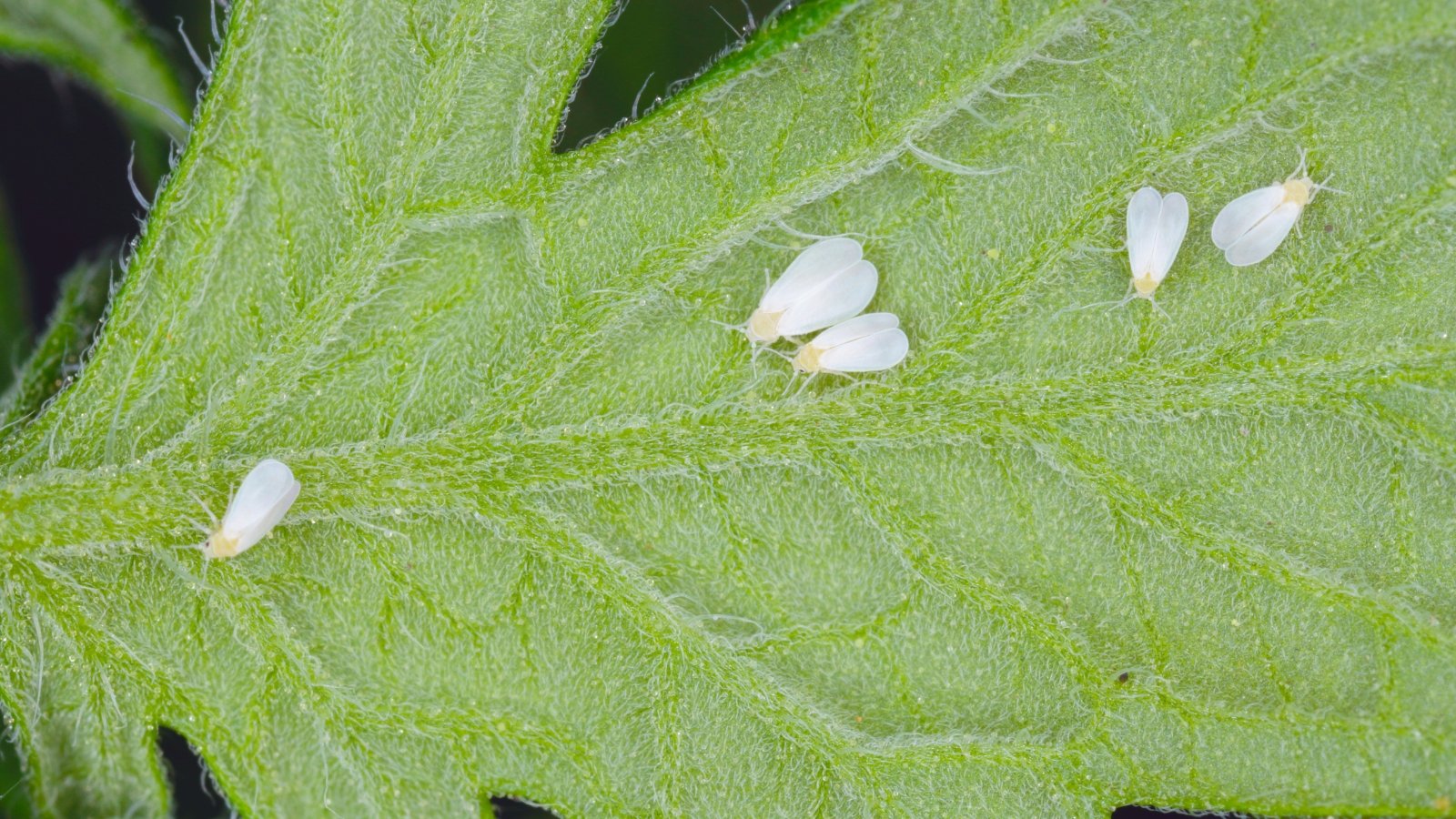

Whiteflies moreover feed on sap and set off weak spot, the place leaves flip yellow and drop. Grownup whiteflies are tiny and white, and likewise you’ll uncover them fluttering spherical foliage when disturbed.
Grownup females lay eggs on leaf undersides, and nymphs hatch to feed on tissues. The adults pierce foliage to feed on sap.
Whiteflies most regularly occur in areas of low airflow, like greenhouses, walled gardens, and on chrysanthemums indoors.
Treatment
Washing the undersides of leaves with a clean materials is an risk nonetheless tough as regards to the multitude of petite mum leaves. Neem, insecticidal soaps, and completely different horticultural oils are therapies in extreme situations.
Take away and destroy leaves in decline. Make use of sticky traps to catch the flyers, nonetheless phrase that these will lure each different bugs within the color yellow.
[ad_2]
Provide hyperlink
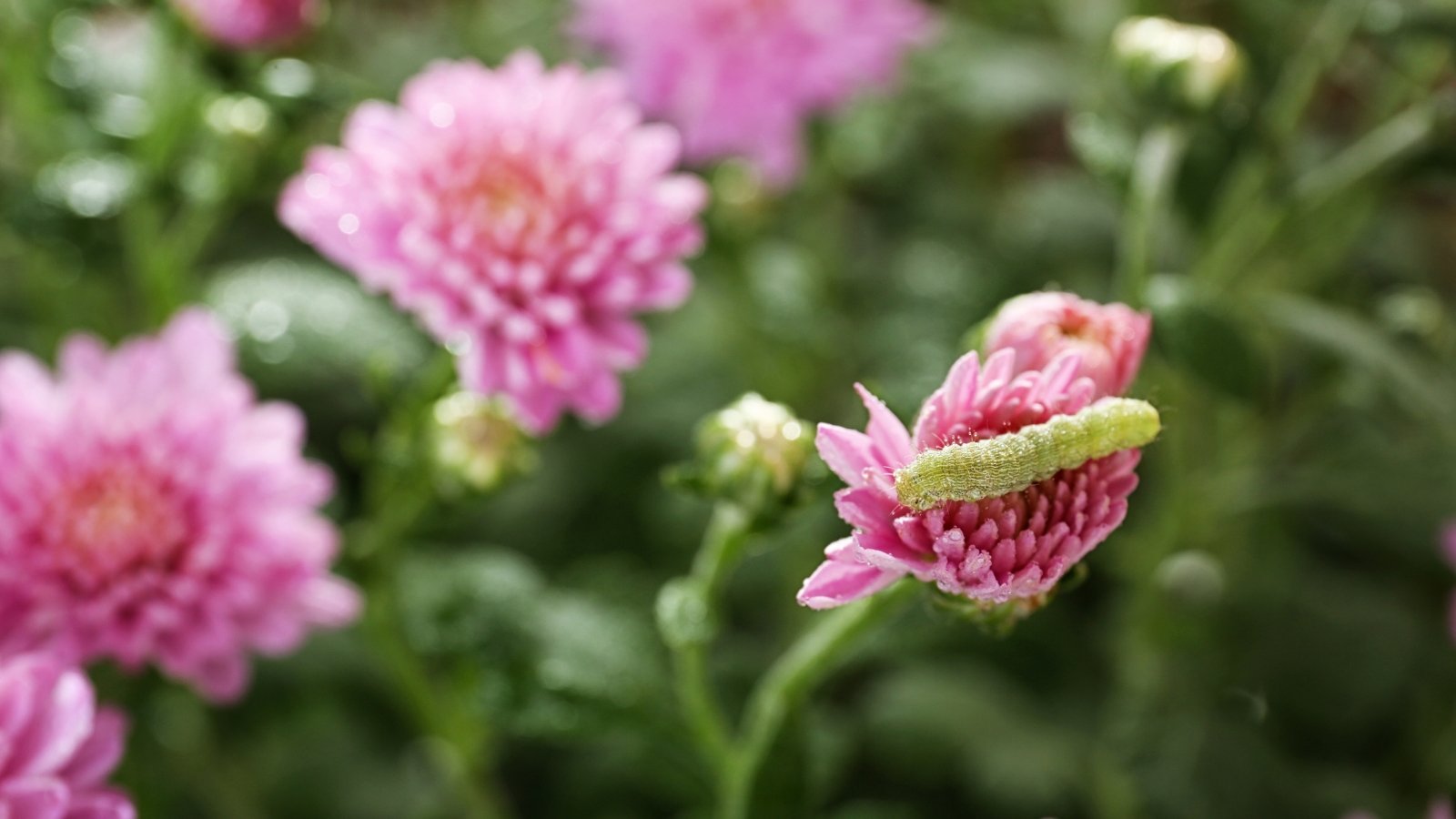
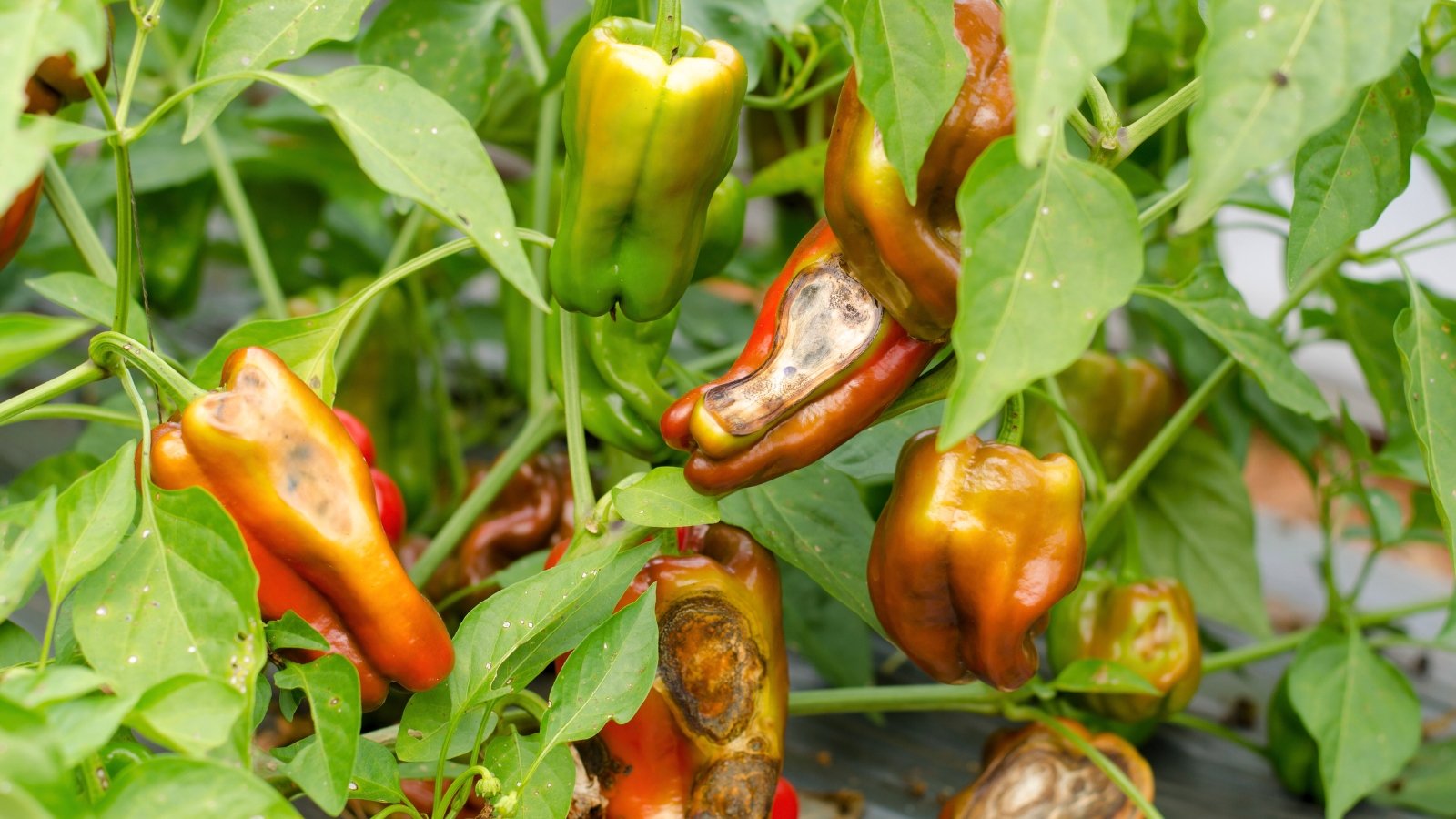
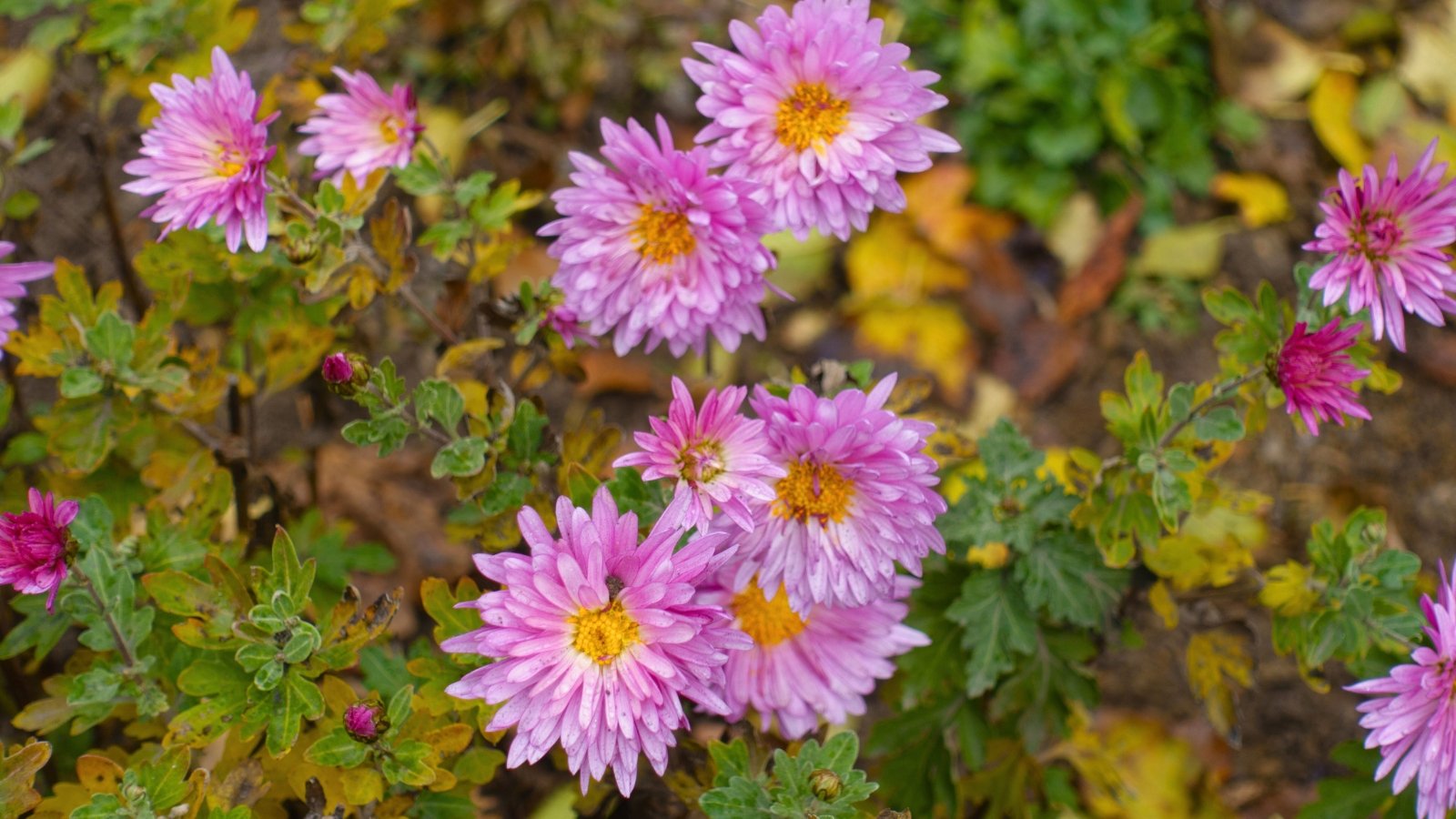
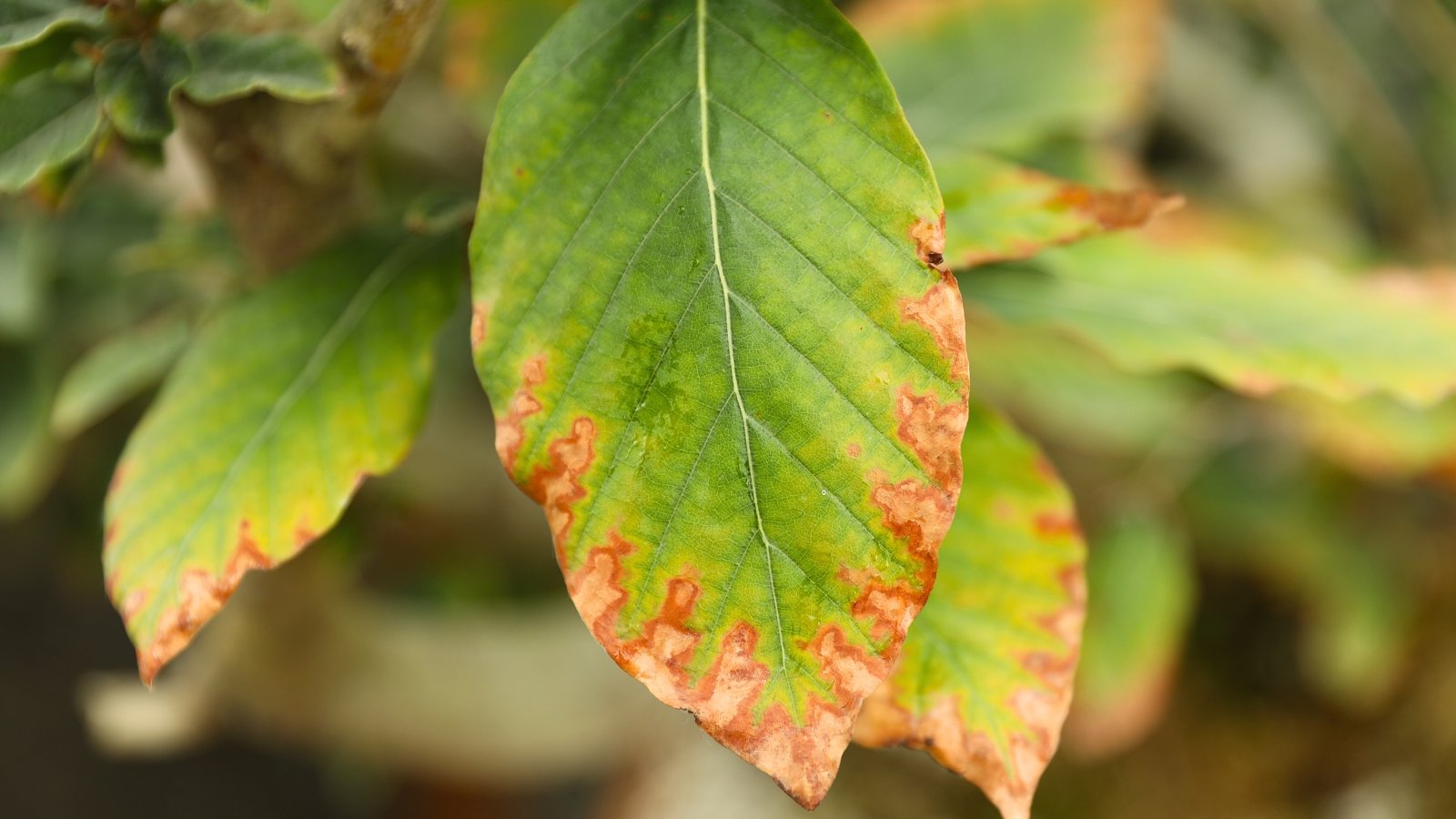
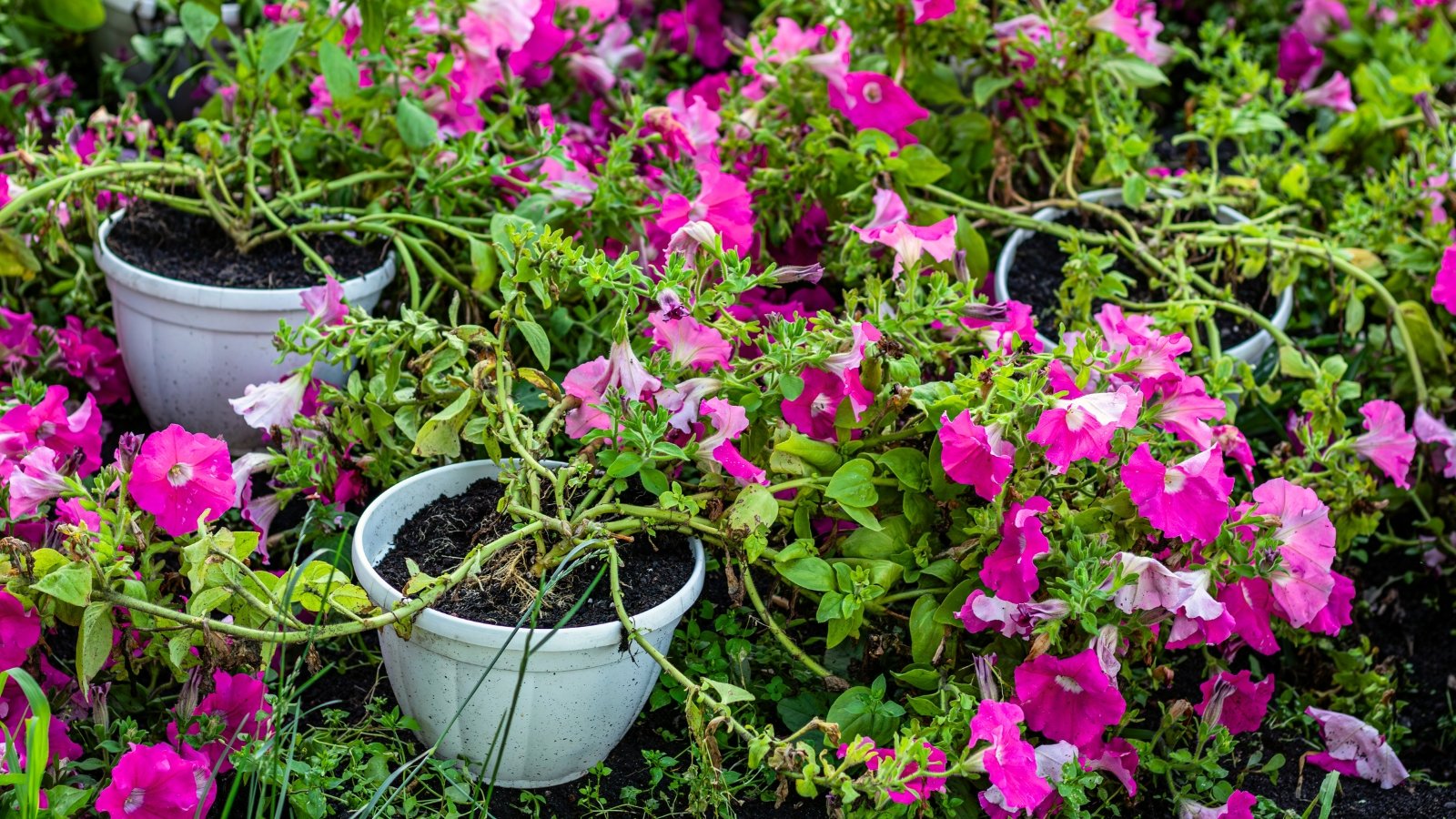
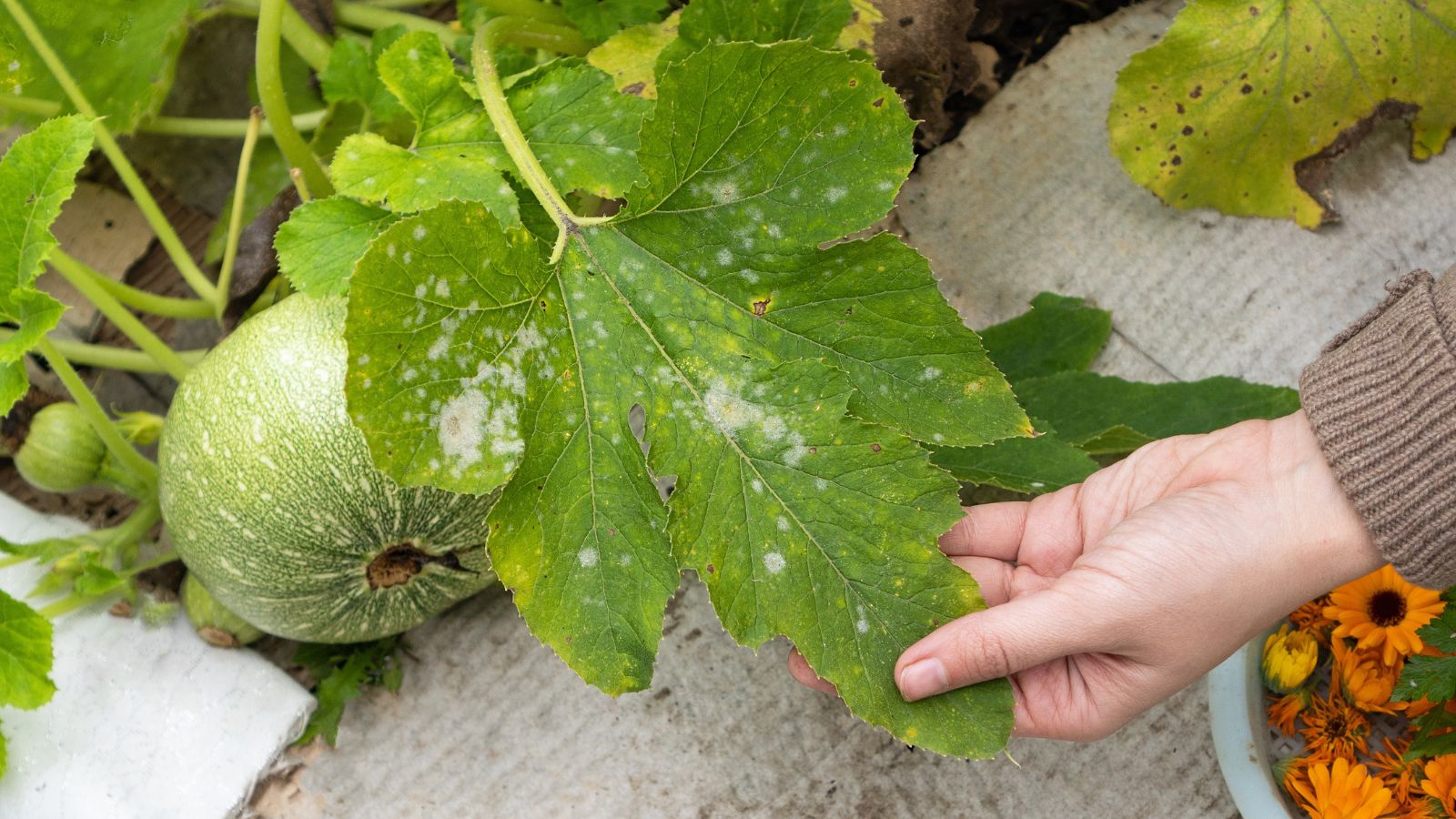
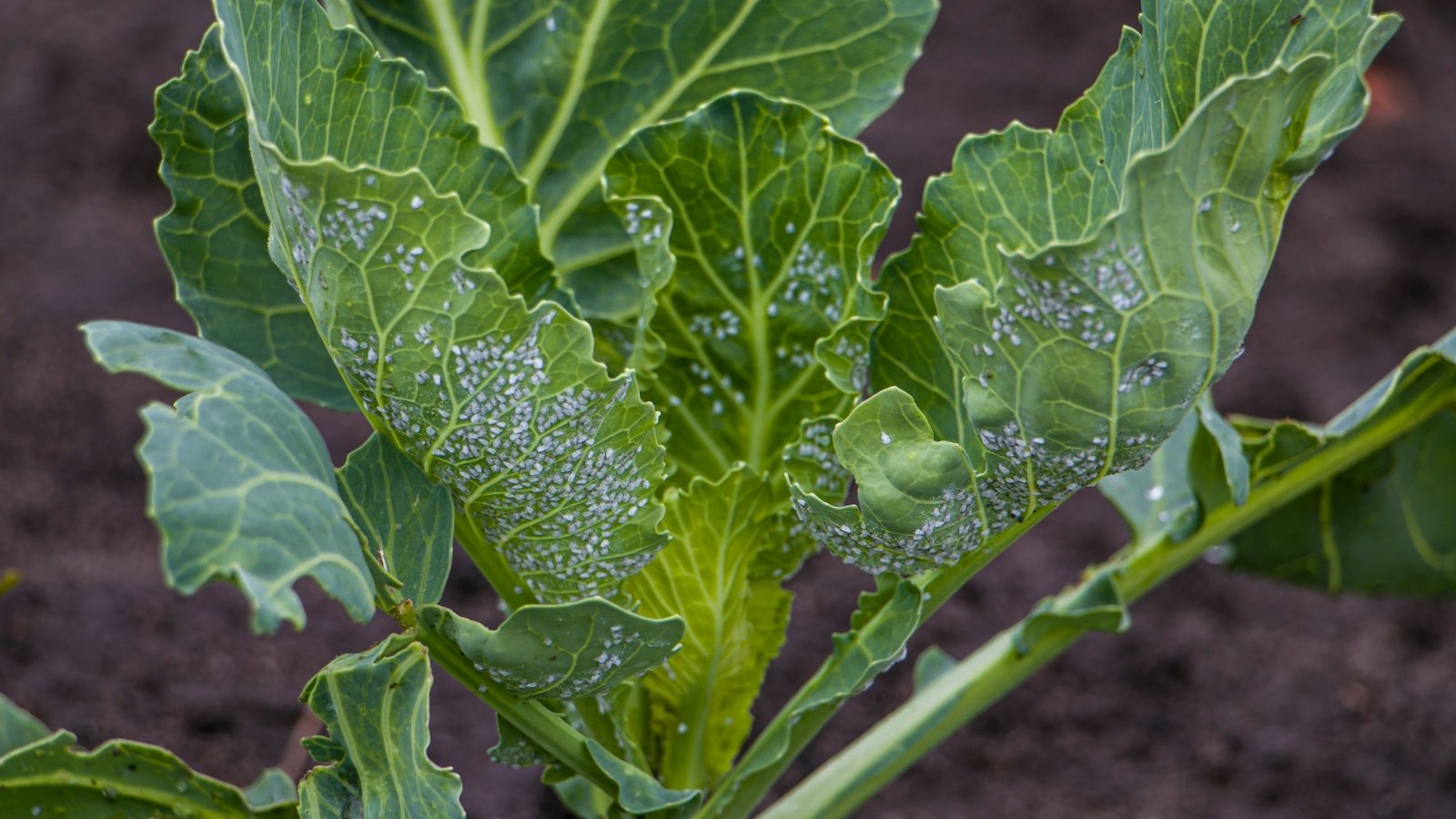
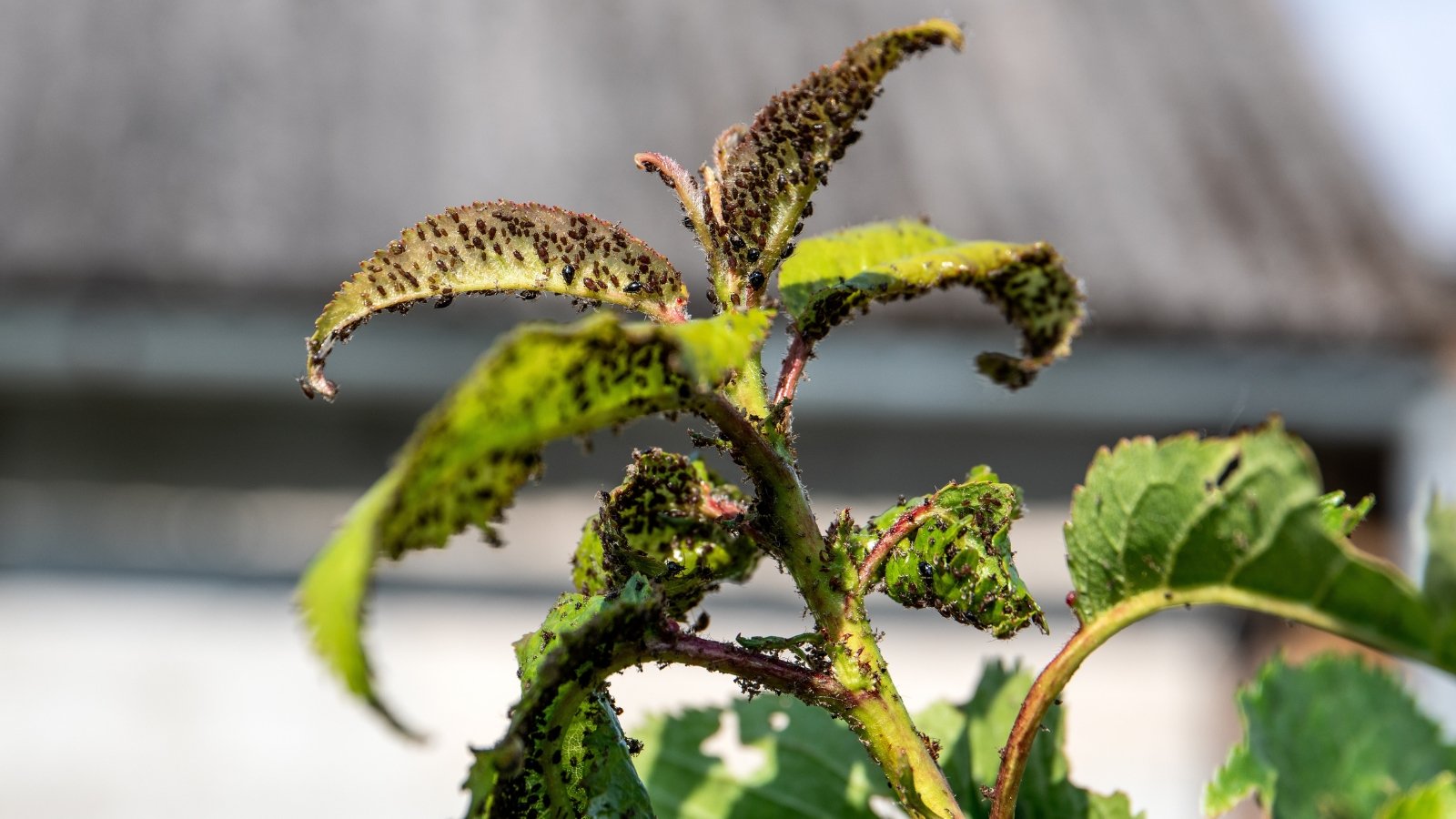
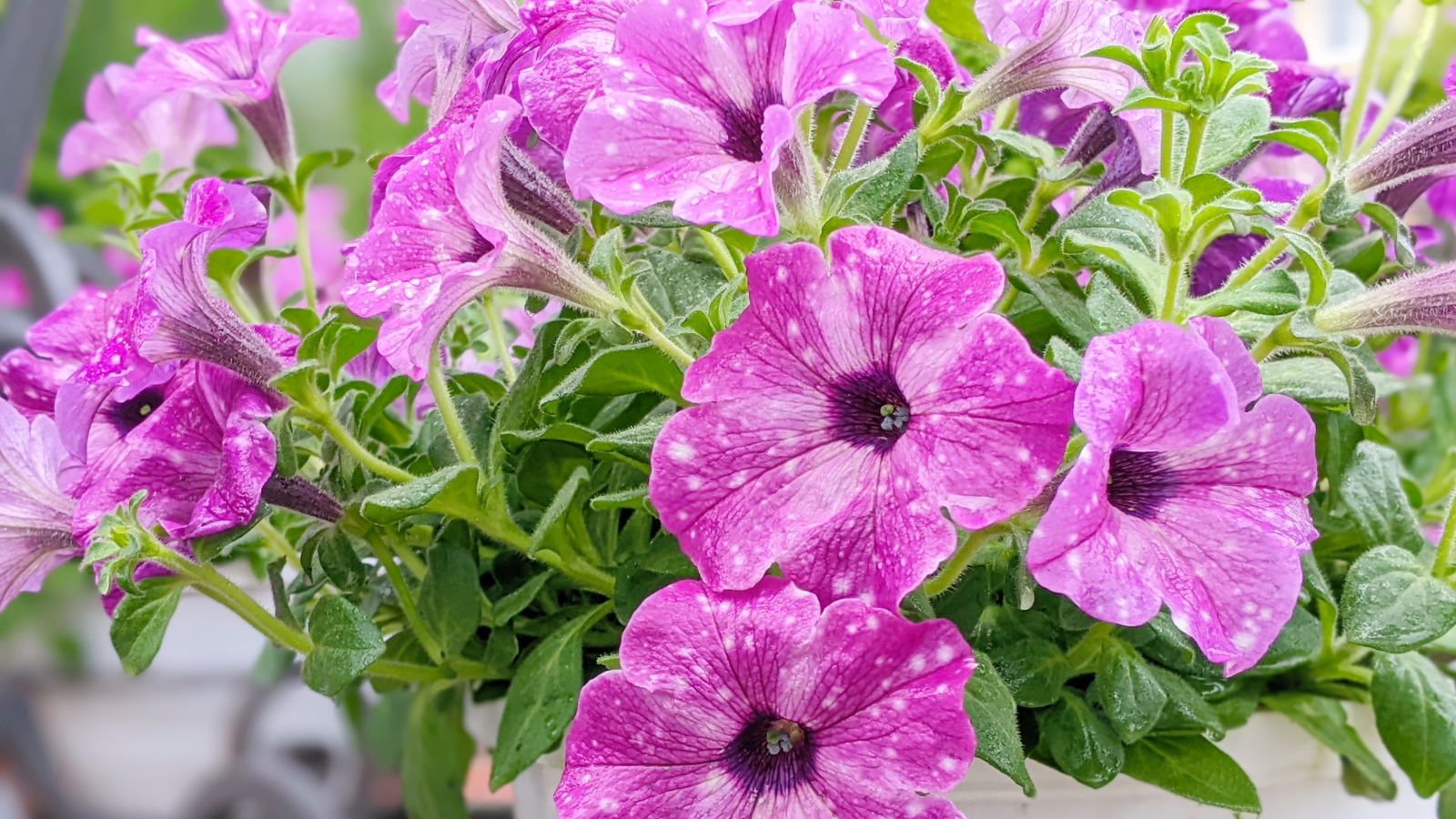
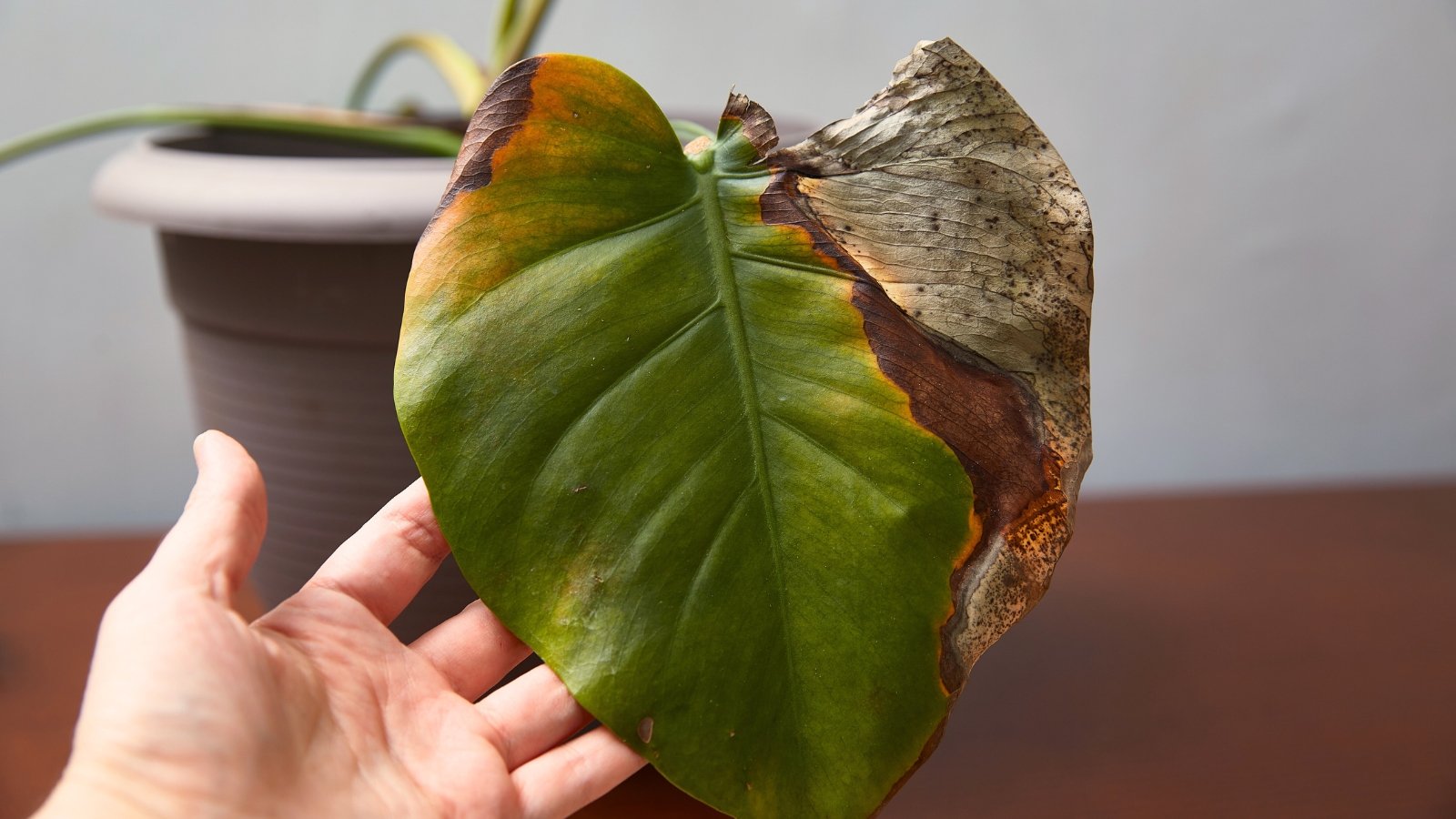

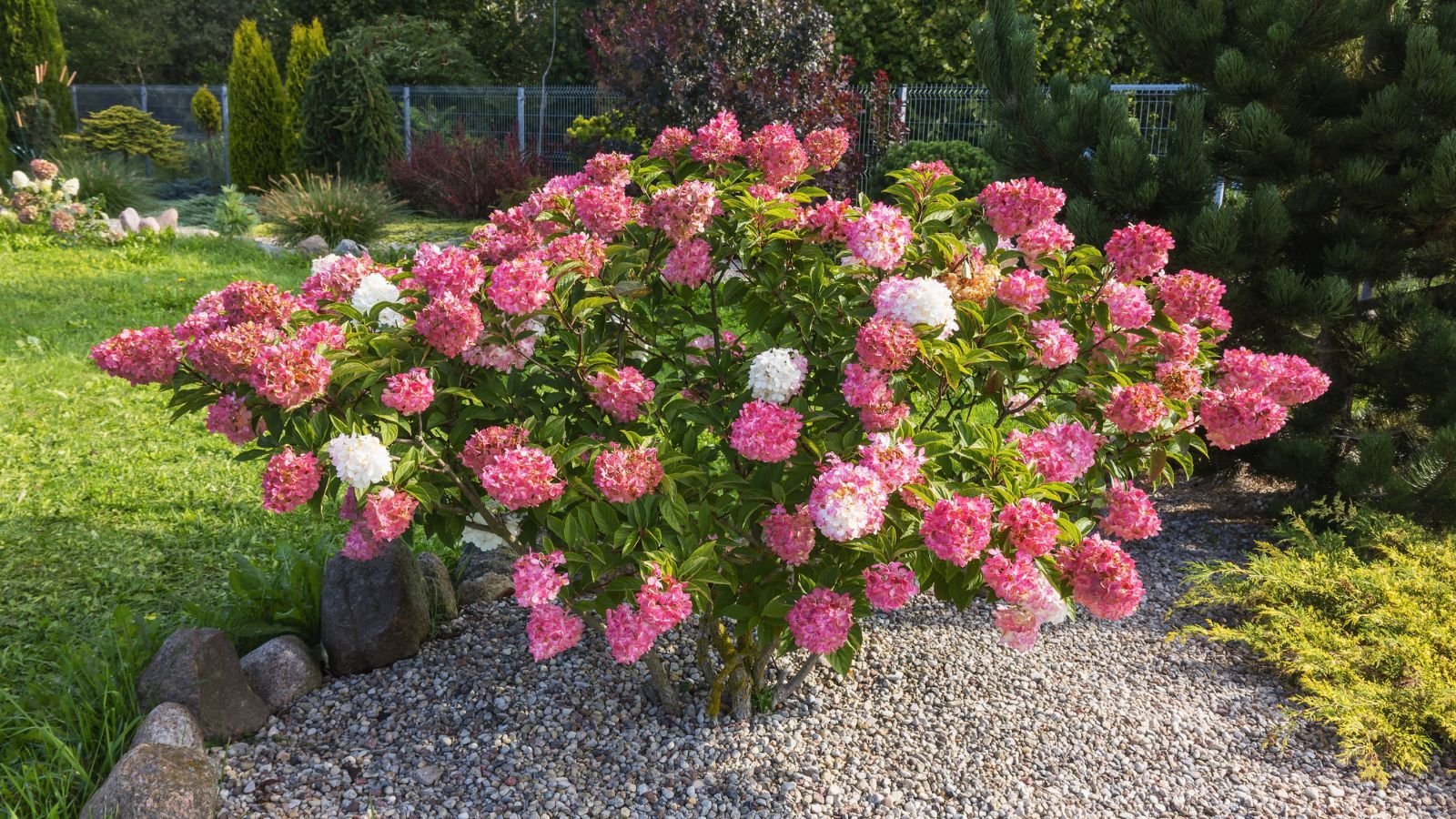
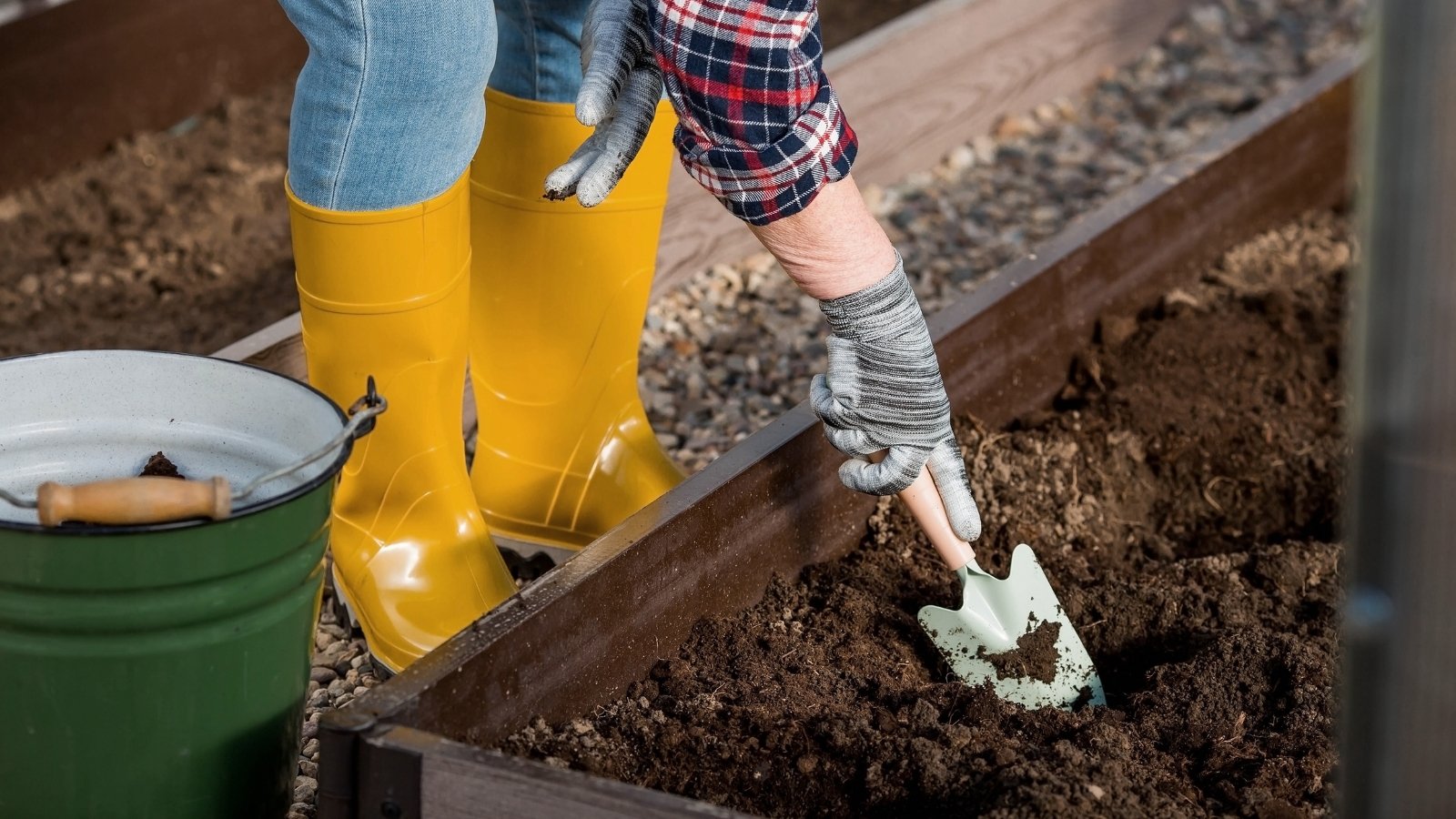

Leave a Reply